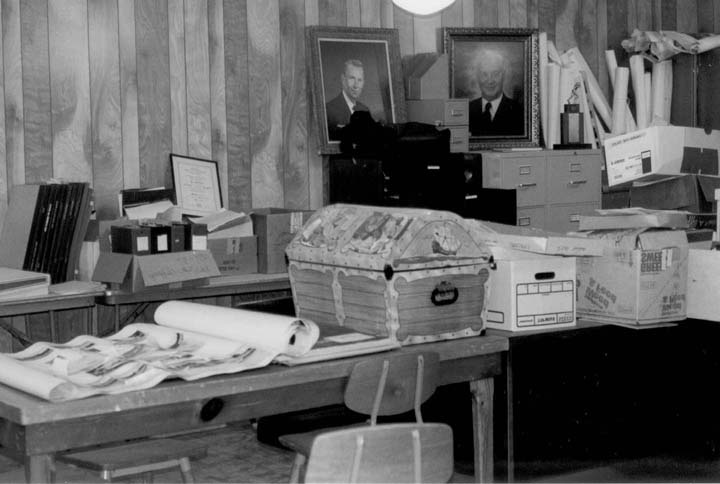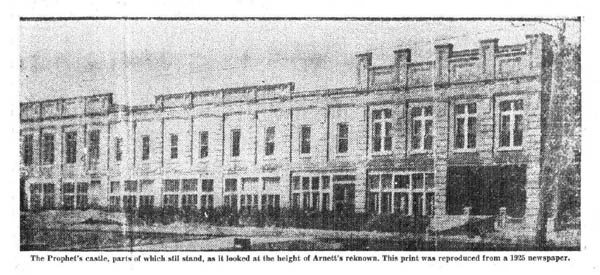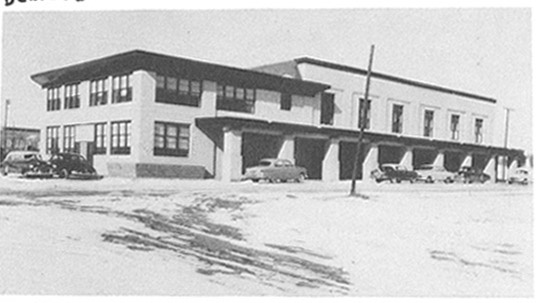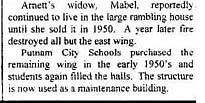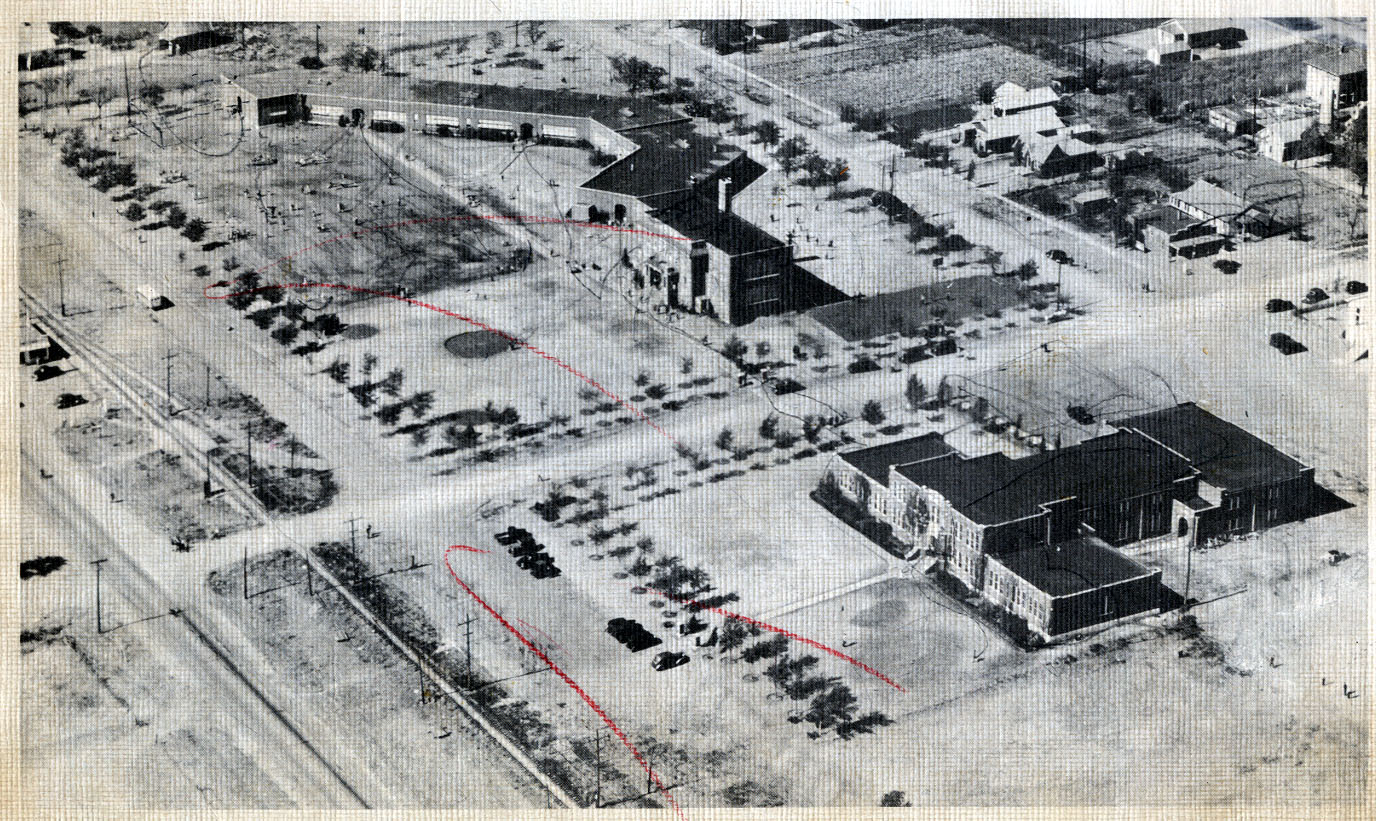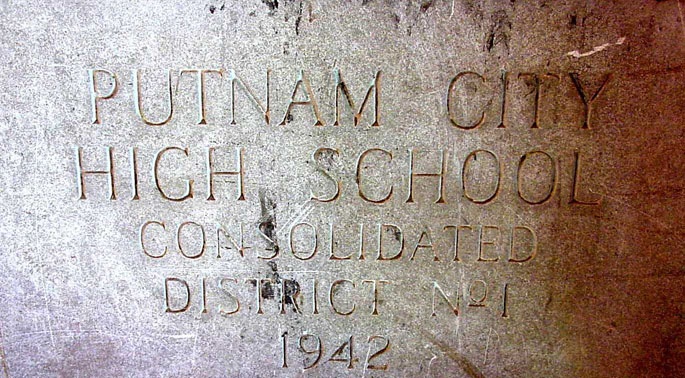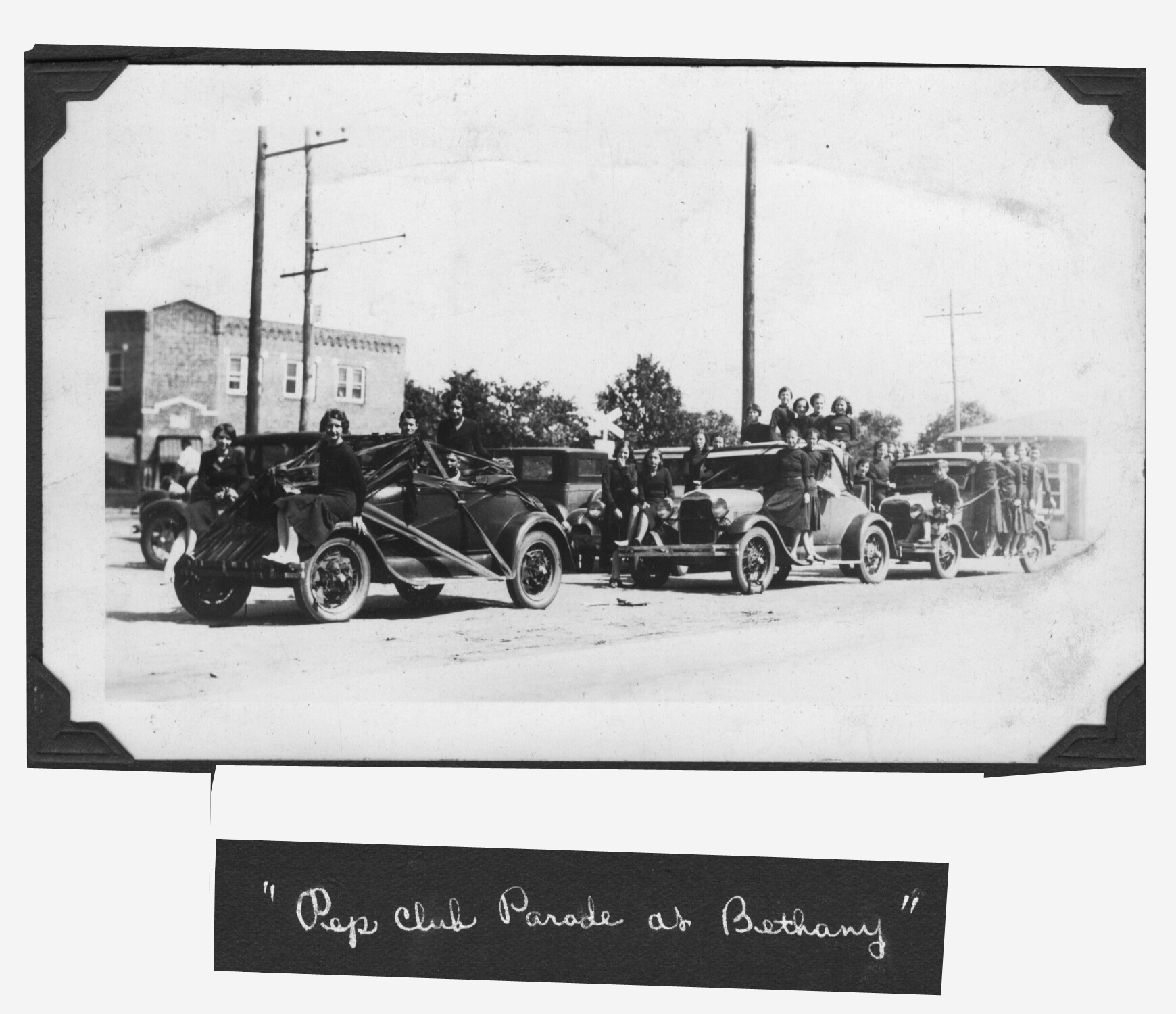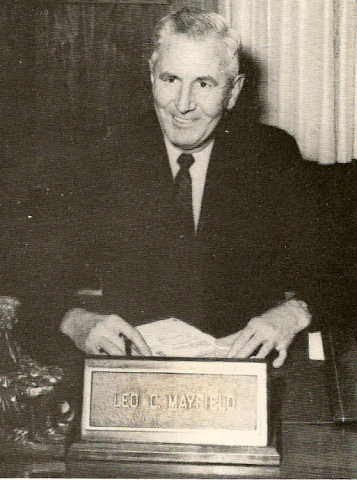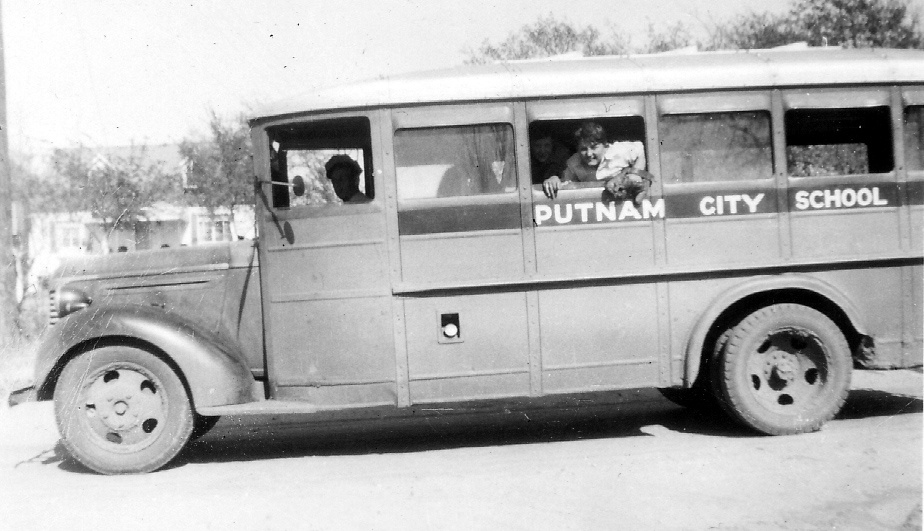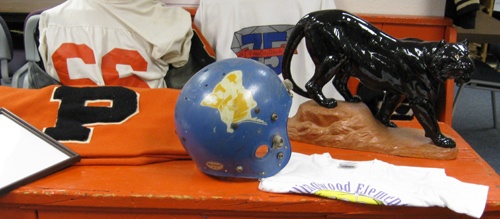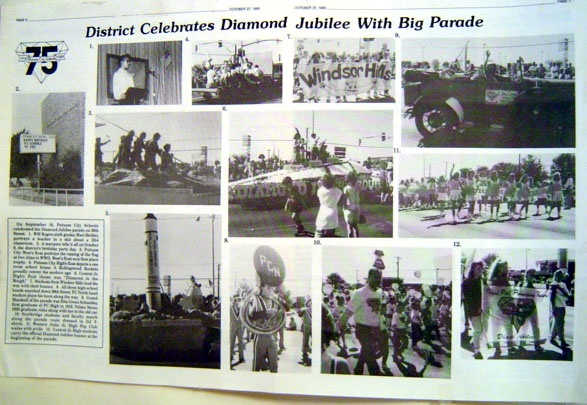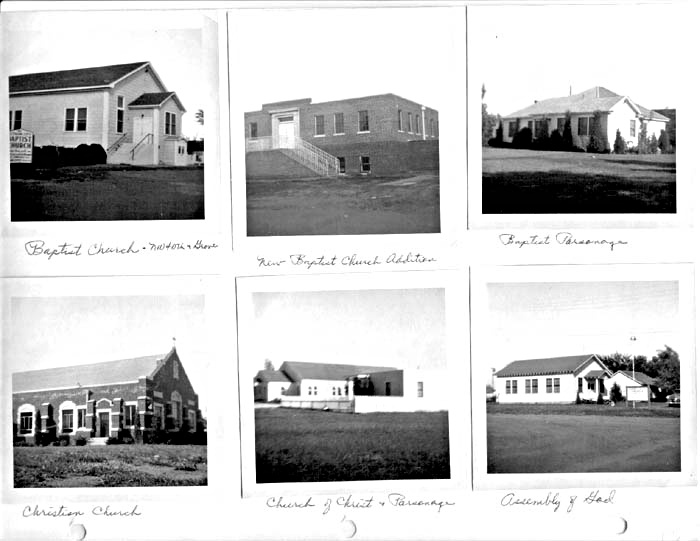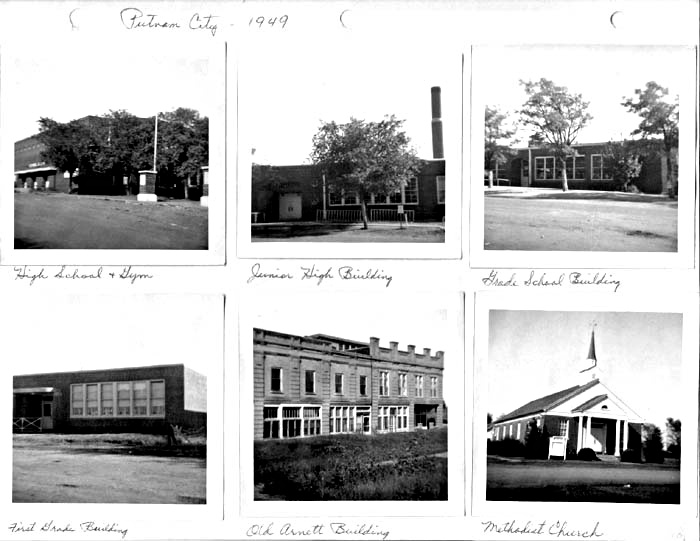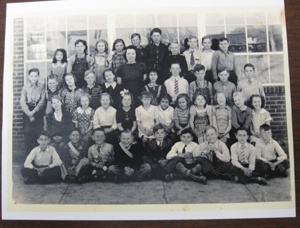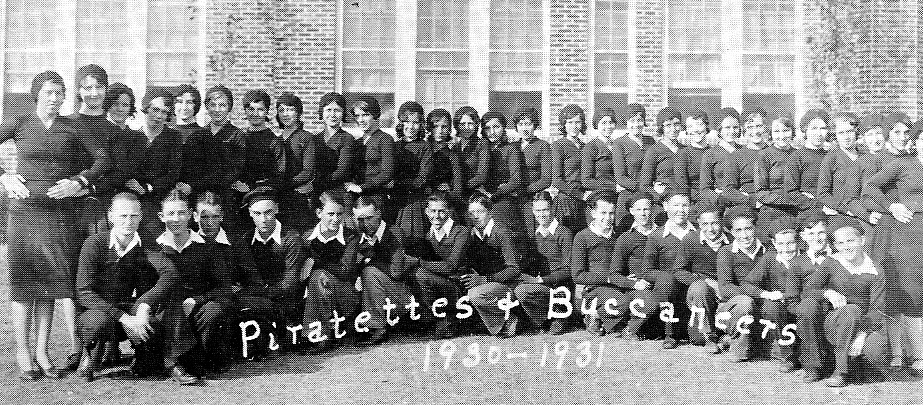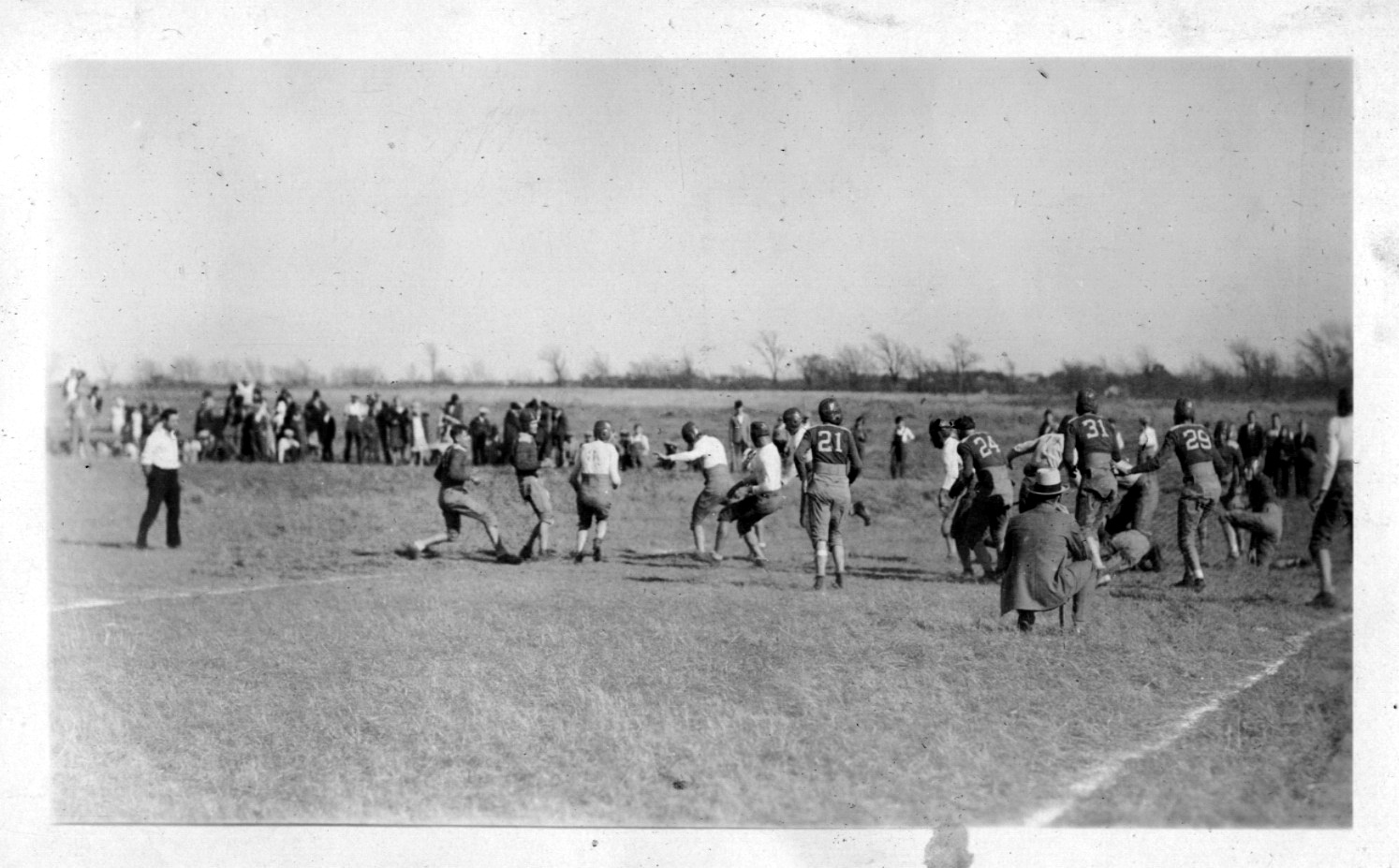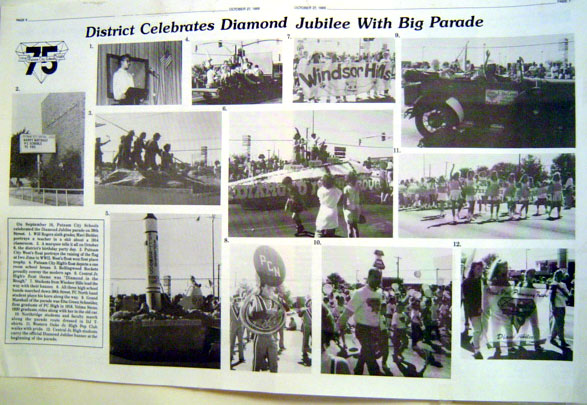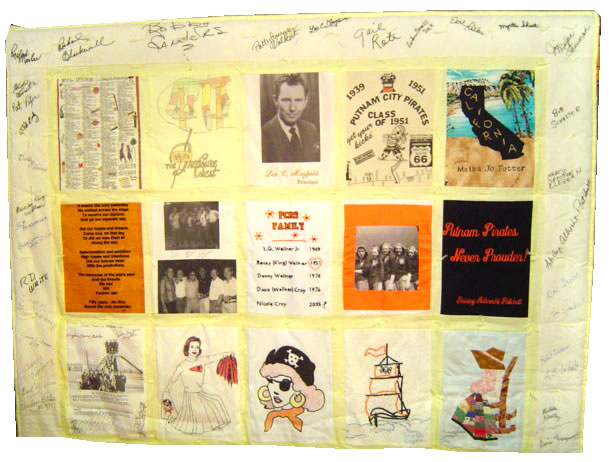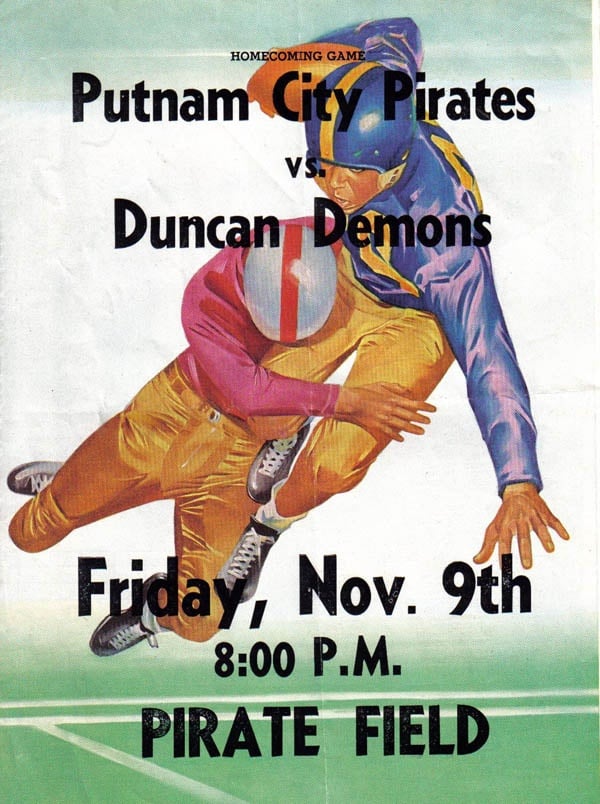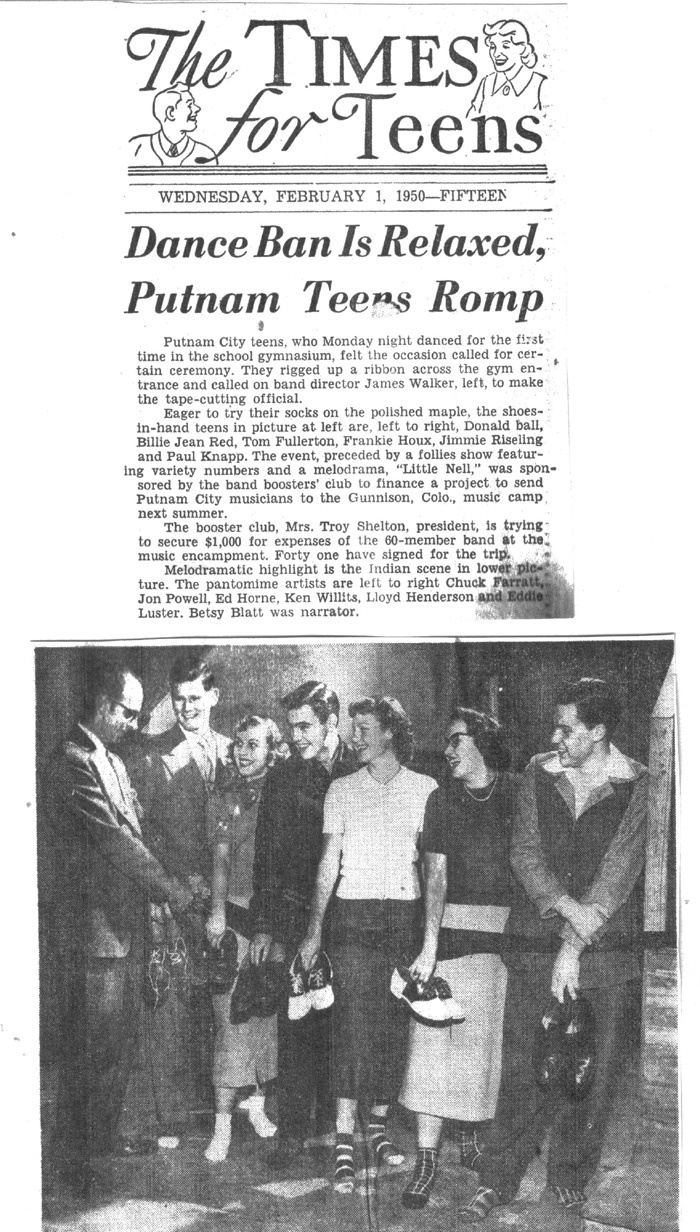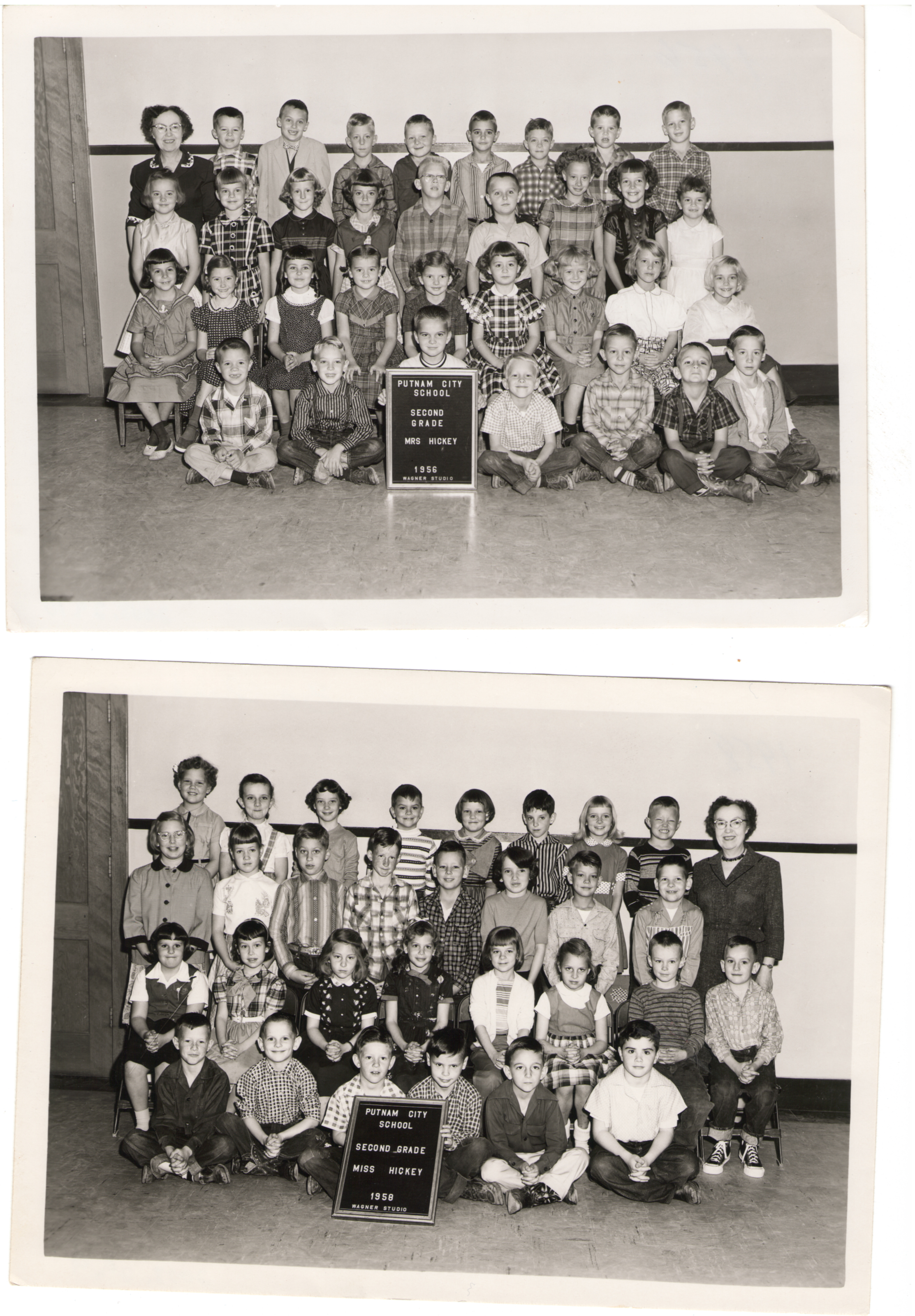Early History
1934 Early School and Students, Viewed facing N.W 39th St. (Pictured Above)
The following article supercedes any story, rumor or myth concerning the establishment of Putnam City Schools. In 2013-14, the Putnam City Schools Museum Committee exhaustively researched school district origins and published them in the Putnam City Centennial book. Recently, committee members decided to present a monthly online article we think will interest you. Here is our first piece. We encourage you to share it with anyone who you think will be interested.
Putnam City Schools’ real history may surprise you
Two stories are frequently told about the beginnings of Putnam City Schools. One of them claims that Israel M. Putnam donated the land on which the first Putnam City school was built and asked that the school district be named for him. The other is that Putnam City, named after Putnam himself, was originally the State Capitol of Oklahoma, at least for a short period of time. Here’s what actually happened.
In 1901, Israel M. Putnam moved from Georgia to Oklahoma, planning to practice law. He soon realized that land development could provide opportunities to make money and in 1902, he founded the Putnam Company.
By 1907, he had become a business leader who had developed a number of housing additions, among them Putnam Heights near N.W. 36th and Classen Boulevard on the north side of town. That year, he was elected to the legislature and served a two-year term.
In 1909, he built a large building, at what is now N.W. 39th Expressway and State, that would later be called the Arnett Building, named after Eugene Arnett who eventually owned it. When the building was being constructed, Putnam had brochures printed calling it a “business block” and began selling stock in the Putnam City Company, Putnam’s land development headquarters. One supplier of construction materials was Minnetonka Lumber Company.
Also in 1909, Putnam entered into a partnership agreement with John W. Shartel, Henry Schafer and Anton Classen. The three invested in the Putnam City Company. Shartel, Schafer and Classen owned the Interurban Railway and agreed to provide on-the-hour trolley-car service to and from Putnam’s new building every day from 6:30 a. m. until 10:30 p.m. The stop was called “Putnam City” because Putnam planned to extend his property and form a township he wanted to call Putnam City. Putnam also began buying land along the Interurban rail line on the route that ran from north Oklahoma City west to El Reno.
Shartel and Schafer started buying land in the area Putnam had platted to become Putnam City. M.F. Owens and the Military Park Development Company were also buying up land for Putnam City Company.
Sometime in 1909, Minnetonka Lumber Company began demanding approximately $600 that Minnetonka Lumber Company said Putnam City Company still owed for construction materials. Minnetonka took Putnam City Company to court for that money plus interest. In 1912, the debt was paid and the lumber company dropped out of the lawsuit
In 1910, Putnam sent a proposal to Governor Charles N. Haskell and members of a State Capitol Commission — appointed by the governor — that the Capitol complex be established on land Putnam would donate. That land was east of the area being platted for Putnam’s proposed Putnam City township. Business partners still included Shartel, Schafer and Classen. Putnam’s offer was to sell the state a 2,000-acre tract of land for $1. The state would keep 80 acres as a free, donated Capitol site and sell the remaining 1,920 acres to secure the $1.5 million needed to build a Capitol building. Any amount above the $1.5 million would be returned to Putnam. Putnam and his partners could then incorporate the platted Putnam City area, which would become more valuable property due to its location next to the Capitol complex.
Governor Haskell and the commissioners accepted Putnam’s proposal. However, the Oklahoma Supreme Court rejected it November 14, 1910, because the initial bill to locate the State Capitol had not been adopted by voters. A second attempt to get Putnam’s Capitol-location proposal accepted involved a special session of the legislature, which convened in Oklahoma City, beginning November 28, 1910. The legislature rejected Putnam’s proposal on December 14, 1910.
Putnam City Company’s land purchases amounted to $302,250 financed by Shartel, Schafer and Classen.
Incorporation papers that would have made Putnam City a town were never filed with the Secretary of State’s office.
In 1912, Shartel and Shafer and several others had joined the Minnetonka lawsuit which by then dropped out of the case after receiving $600 plus interest. The cases of the remainder of those suing Putnam City Company were not decided until the Oklahoma Supreme Court issued its opinion July 24,1923, crediting Putnam with $75,000 plus interest because he had not received the promised streetcar service. The court awarded more than $176,000 plus interest to Shartel and Schafer because the court said Shartel and Schafer were entitled to be repaid the money Putnam had received when he mortgaged the property in question.
Before the court had ruled on the case, Putnam City Company had been dissolved in 1919.
Interestingly, Block 25 of Putnam City Company’s platted land site — the block on which Putnam City Schools’ first school building had been completed by March 1915 — was completely omitted from the court judgment in 1923 and two sheriff’s sales, one in 1918 and one in 1924. County Courthouse records indicate Putnam did not own the land and did not sell, grant or donate any land on which a school building or any other kind of building could be built.
In 1933, Shartel’s descendants signed a quitclaim deed to Block 25; it was probably requested by the school district. In 2014, PCHS alum, publisher, and attorney Bill Bleakley determined, after examination of courthouse records, that Putnam City Schools had obtained legal ownership of the land “by prescription or adverse possession,” commonly translated as “squatters’ rights.”
___________________________________
*According to the plat prepared — but never submitted to the Secretary of State’s Office — by Putnam for his Putnam City township, the township boundaries would have been what is today N.W. 42nd on the north, N.W. 33rd on the south, N.W. MacArthur on the west, and an area approximately three blocks east of N. W. Meridian. The 2,000 acres Putnam and his partners planned to provide for the State Capitol would have begun on the eastern boundary of the proposed Putnam City township and would have expanded to the east.
* Because Governor Haskell and the State Capitol Commission had accepted the Putnam proposal to build a State Capitol near the platted Putnam City, some individuals believe the land on which the school district was established in 1914 was, for a short time, the State Capitol. Because the proposal was rejected by the Oklahoma State Senate on December 9, 1910, others cite the illegality of that claim.
*In 1914 the first Putnam City students attended classes in the building that had been the location of what was the headquarters and “business block” built by the Putnam City Company, later known as the Arnett Building. The actual first Putnam City school building was completed in March 1915, eight years before the
Oklahoma Supreme Court ruling in 1923.
*A picture of the 1933 quitclaim deed to Block 25 is included on Page 9 of the Putnam City Schools
Centennial book.
This article was written by Gloria Quaid with considerable help from Marcia Feisal,
David Stinchcomb, Beverley Stinchcomb and Sheron Rodgers.
Come visit the Putnam City Museum!
The Putnam City Museum is the finest, most complete school museum in Oklahoma. We invite you to visit us any Saturday between 10 a.m. and 2 p.m. The museum is located at N.W. 40th and Grove. If you want to schedule a tour, please contact David Stinchcomb, jas-cat@sbcglobal.net or Marcia Feisal,
mfeisal77@gmail.com. If you have questions about this piece of our history, please email Gloria Quaid,
gloria@gloriaquaid.com. For more information about our 109-year history, a limited number of Putnam City Centennial books published in 2014 are available for $25 plus a $6 mailing fee. And, of course,
volunteers are enthusiastically welcome to join our committee.
Committee members include Sherry Boyd, Marcia Feisal, Angie Howerton, Kyle Howerton, Bernice Lockhart, Jayne Manley, Kent Mathers, Alyx Picard, Gloria Quaid, Fred Rhodes, Sheron Rodgers, Mike Rogers, Jim Shields, Jackie Simpson, Beverley Stinchcomb and David Stinchcomb.
| |


